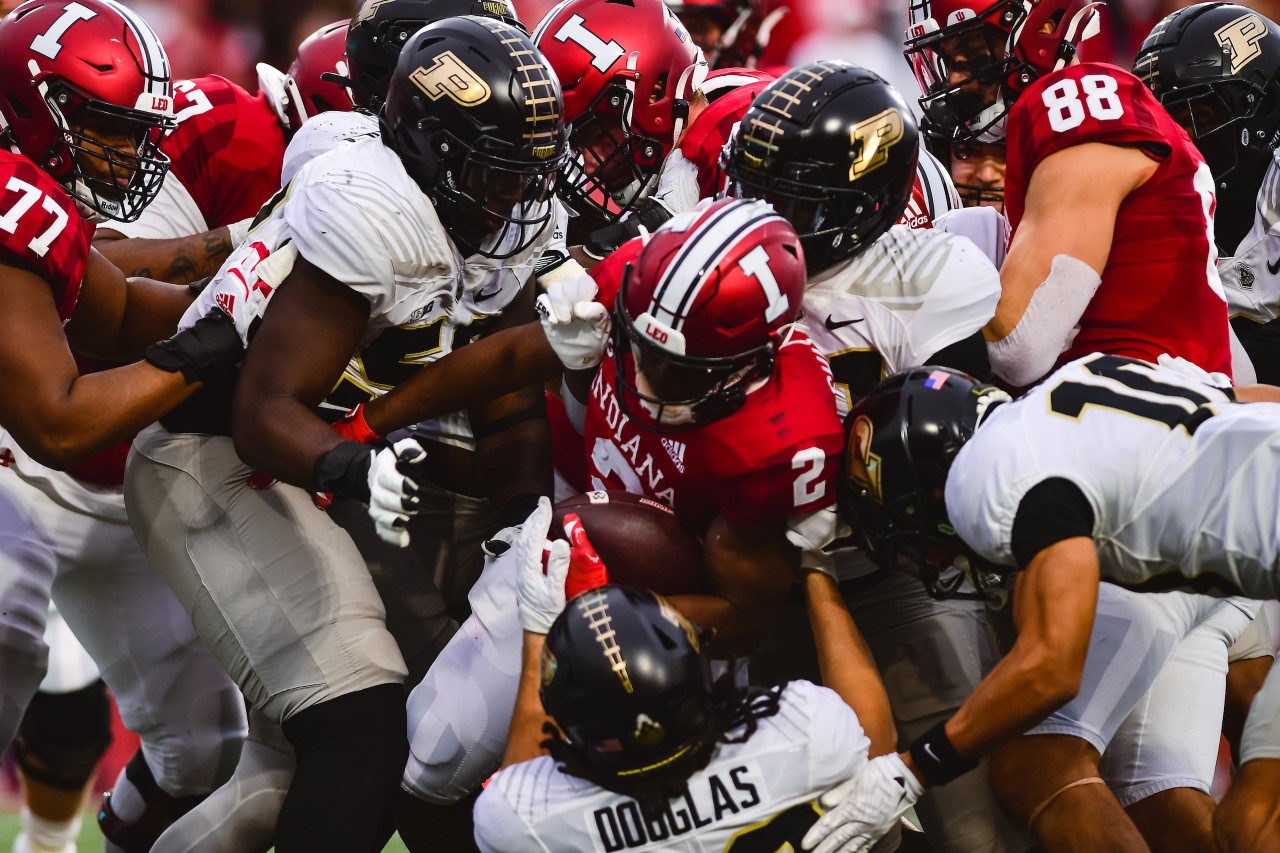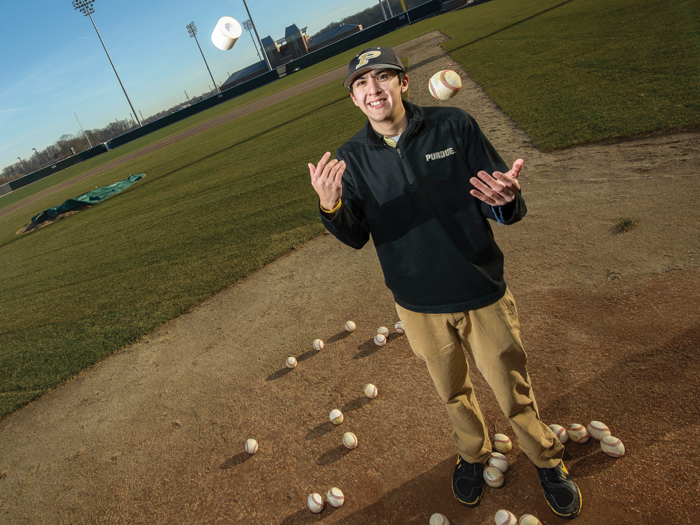Bowl-bound Boilers stay healthy thanks to HHS alumnus

A typical injury in NCAA football happens suddenly, which means Purdue University football team doctor, Dr. Alberto Oseguera, and the athletic trainers must be at the ready.Chris Johnson/Purdue Athletics
Written by: Tim Brouk, tbrouk@purdue.edu
Dr. Alberto Oseguera will add “Bowling” to his sports medicine resume on Jan. 2.

Dr. Alberto OsegueraPhoto provided
Oseguera, a 2013 Purdue University Department of Health and Kinesiology alumnus, joined Boilermaker football as the team doctor in October, and he will travel with the program when it faces LSU at the Cheez-It Citrus Bowl in Orlando, Florida.
While Purdue football’s head coaching change dominated recent headlines, it doesn’t change the Boilermakers’ successful season, which Oseguera will always remember. While joining midseason, he settled in quickly, earning the trust of the 117 student-athletes — 37 of them College of Health and Human Sciences students — affiliated with the team.
Like new head coach Ryan Walters, Oseguera is the head coach for keeping the Boilermakers of the gridiron healthy. A typical game sees him in constant communication with the team’s athletic trainers, a role he once had during the 2011 football season.
“It really takes a village, and it takes that village working in unison to provide the best care,” said Oseguera, who earned his medical degree from the University of Texas and now practices under the Franciscan Health banner. “I learned that early on as an athletic training student, and I’ve really carried that forward as a physician and head team physician for the football team.”
After completing a sports medicine fellowship at the University of Washington while serving as a team physician for the Huskies’ football team and other athletic programs, Oseguera jumped at the chance to join Purdue Football full time. From concussion protocols to the flu, Oseguera tackles every malady that is thrown at him by the team of Bowling Boilermakers.
What are the most common injuries you see during the football season?
I think the biggest thing with football that you see is there is a lot more acuity. With track and field and baseball, you see a lot more chronic injuries — injuries that take time to develop. They’re more just overuse-type issues. Where in football, it’s really more they get injured then and there, and you have to act fast and think quickly on your feet.
Concussions are a major concern in football at any level. What have you learned about this issue so far in your career?
I think there are a lot of things that have been done to prevent these types of injuries. There’s been rule changes, such as moving the kickoff. We have special helmet protections our guys wear during practice, and we also limit the amount of contact that’s done during practice during the week. There’s only one day where they’re allowed full pads. It’s a lot less contact. Guys who are kind of beat up have a special jersey they wear to signify they can’t be hit during practice.
Anytime there is a head injury, we always do a thorough evaluation, make sure they’re safe to go back. I think the challenging thing with concussions specifically is honesty with the patients. These guys get hit in the head almost every play, I would say. If you see any issues as they’re coming off the field or they’re just not feeling right, that’s where intervention is definitely needed. One thing that also helps: A lot of people don’t know we have what we call spotters — people looking out for these types of head injuries and then relay that information to us if we don’t see it. The student-athlete will be taken out so we can do a thorough evaluation. Concussions are definitely not easy, but that’s why the protocols are in place. We should follow those to a T.
What’s game day like for you, and what do you do when there is an injury on the field?
The athletic trainers and I have hand signals and radios in case they need anything. If somebody goes down, the athletic trainers run out there to do initial assessment and then relay that information to the rest of the medical staff. If I need to see that person, I will see them. Usually, either myself or one of our orthopedic surgeons will see them if they go down on the field. We’ll usually take them to the tent; we’ll do an evaluation and ultimately decide if they’re safe to go back in or not. After the game, we’ll meet and go over our list of injuries and see if anybody needs to be seen that day or meet the next day at our injury clinic.
Usually at halftime, we’ll see anybody who needs to be initially evaluated. Maybe they just were banged up during a play and didn’t really go down. They’ll come to us at halftime and be like, “Hey, can you check on my ankle real quick?” or “I just need to retape my ankle.” Or sometimes they just need some sort of intervention to help them for the rest of the game. Occasionally, we may have to remove them from play if we deem them unsafe to return.

Oseguera was a student athletic trainer for the Purdue baseball team in 2013.Charles Jischke
Why did you choose sports medicine?
I’ve always loved being a part of the sports world. I grew up playing sports. I was never super athletically talented, but I got into athletic training in high school, and I came (to Purdue) for athletic training and got to observe the physicians we would work with. I thought, “That would be something cool I could do.” So, I ultimately decided to take that route.
How have your years in health and kinesiology helped your career? What concepts are you still using?
I think the biggest thing I learned as an athletic trainer is the concept of the sports medicine team. It takes a village, really, to care for these student-athletes. Everybody has their important roles. They may provide different approaches, but the ultimate goal of everybody is to provide the best health and safety for a student-athlete. I think that really helped me moving forward because we have to be able to work with these other interdisciplinary teams, such as our orthopedic surgeons, our team psychologists, team psychiatrists, dietitians, athletic trainers and physical therapists.
What are your thoughts on the team making it to the Citrus Bowl?
I think it’s really exciting for the guys to play in such a good bowl game. I know they were disappointed, I think, with the loss at the Big Ten championship (versus University of Michigan), but I think they’ll look back and realize this was a special season for them with the opportunity to play in a great bowl game against a good opponent for them. It’s nice and sunny down in Florida, so I’m sure they’ll enjoy that.